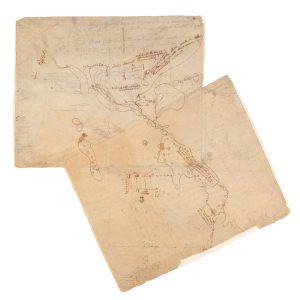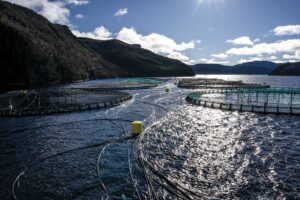
People & Culture
Kahkiihtwaam ee-pee-kiiweehtataahk: Bringing it back home again
The story of how a critically endangered Indigenous language can be saved
- 6310 words
- 26 minutes
People & Culture
The investigative journalist weaves a riveting tale of greed, obsession, science and hope for the future

For four years, Karen Pinchin visited tuna hot spots from Nova Scotia to Maine, Portugal to Japan to pen an eloquent piece of environmental journalism centred on the mighty bluefin tuna. Kings of Their Own Ocean tackles how our insatiable appetite for this remarkable species almost destroyed it, but also how humans have rallied to save the fish from the brink. Pinchin used the life story of one real bluefin tuna (nick-named Amelia, after that famous wanderer Amelia Earhart) and one dedicated tuna tagger, Al Anderson, to bind together this epic tale of one fish’s mysterious ocean-spanning journeys.
A lifelong fisherman, Anderson tagged and released more than 60,000 game fish, including Atlantic bluefin tuna, over 50 years. Long before conserving fish stocks was top of mind, he went against the tide, championing the collection of scientific data to understand what made big game fish tick.
Amelia was a single fish, caught first by Anderson in 2004 as a 10-pounder off the New England coast, tagged again in 2007 off the waters of Cape Cod as a 90-pounder by scientist Molly Lutcavage, and, finally, caught in a fish trap off the coast of Portugal as a 600-pounder in 2018 and sold. Her multiple captures were a window into one fish’s mysterious ocean-spanning journeys.


People have been obsessed with bluefin tuna for all of time. They are a charismatic fish. There’s something otherworldly and ancient about them. Their physiology. Their colouring — it’s almost so outrageous that you feel like a human mind couldn’t even conceive of it. A bluefin tuna is beautiful in a way that is so different from humans. But the more brutal part of it is that this fish grows extremely large and we humans have enormous appetites. And so the size of its body has allowed it to be commodified. In Roman times it was salted and shipped all across Europe to feed the armies that then conquered other nations.

Bluefin tuna is what’s known as a “wicked” problem in international policy. That means it’s an issue so profoundly tangled up in so many scientific, social and cultural issues that it’s very difficult to solve. When you pull one thread to try to make change, you’re moving all the other threads. You have to slowly untangle these threads. And those are the issues and topics I am naturally drawn to. I knew if I could get readers to care about Al, and if I could show Amelia as an animal whose life had real value, then readers would be drawn in and I could weave in the daunting complexities of global fisheries management.
There’s only so much research funding to go around and only so many bluefin in the ocean. That structure tends to pit people against one another. So I really made an effort in this book to understand the many points of view. I’d work on one section of the book and think, Yeah, this researcher sees it the right way. And then I would work on another chapter and think, No, no, no, this person also makes some really good points. There are some ambiguities in the study of bluefin tun. But I think it’s beautiful ambiguity. It’s arguably more true to how life actually is.

Obsession plays a really big role in this book because for data to have meaning, you need to have a lot of it. And so in the absence of lots of people doing this work [tagging bluefin tuna to see where they were travelling] in the earliest days, citizen science originated with individually obsessed people like Al. But those early citizen scientists were the inspiration for an entire net-work. It just takes one person to see how a collection of data can serve society as a whole. Take the Audubon bird counting exercise — when you convince enough people to participate in a type of citizen science then it becomes powerful.
Fishermen like Al get into the mind of the fish. I think a part of yourself needs to drop away and you need to be able to think like a bluefin tuna under the water. There’s a kind of empathy that a fisherman needs to have for the fish that I didn’t appreciate when I started this book. You’re developing almost a rapport with the fish.
That’s the number one question I get when I start talking about this book. And, based on the recent decision by the International Commission for the Conservation of Atlantic Tunas to follow the science and adopt a management strategy and evaluation-led model, the answer is yes, we can eat the fish. If consumers in Canada or the United States see maguro, or bluefin tuna, and it’s been caught out of the Western Atlantic stock, that is a sustainably managed fish. That goes against decades of being told that bluefin tuna is in trouble. However, don’t go overboard. This is a story of moderation.
One of the biggest takeaways for me was that politicians need to get out of the way and let the scientists and the data guide the choices we’re making. We need to be able to put short-term interests aside and say, “What are the models telling us? Where is this going?” I think it is positive that 10 or 15 years ago a lot of scientists had given up hope that there would be positive change in the bluefin tuna sector. But that change is happening now.
Are you passionate about Canadian geography?
You can support Canadian Geographic in 3 ways:

This story is from the July/August 2023 Issue

People & Culture
The story of how a critically endangered Indigenous language can be saved

People & Culture
The history behind the Dundas name change and how Canadians are reckoning with place name changes across the country — from streets to provinces

People & Culture
*It means “awake” in Beothuk, the language and people who once called present-day Newfoundland home for about 2,000 years. One young woman, believed to be the last living Beothuk, left a collection of maps and art that help us understand her people’s story.

Environment
Struggle and success in Atlantic Canada, where aquaculturists strive to overcome climate change and contamination while chasing a sustainable carbon footprint